Frank Maruca – The Man Behind the Magic
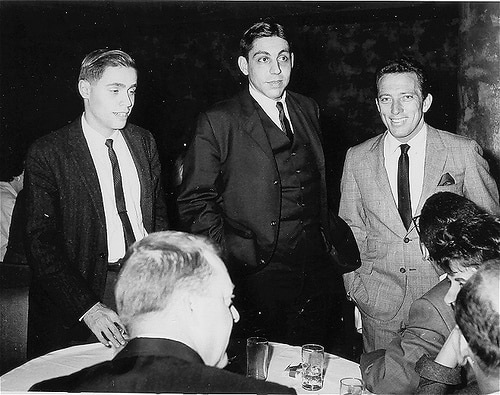
Occasionally at Keener13.com, we talk about the ingredients behind the scenes that so mixed to make WKNR central to the soundtrack of our lives. Today we introduce you to a name that is central to the Keener legend, a name that few listeners may have heard who was crucial to the creation and and success of the station we grew up with.
If there was ever a “Man Behind the Curtain” at WKNR, it was long time Program Director, Frank Maruca. He was the creative brain behind Keener’s transformation and the sales promotion that helped drive revenue. It’s amazing how many of the ideas he espoused are still relevant today. Here are a few:
It isn’t just “Radio”, it’s a sales and marketing machine – Maruca’s background included a stint as sales and marketing director at KYW. The call letters, familiar to many as those of the all-news giant in Philadelphia, were then assigned to a station in Cleveland, Ohio. His broad view of how programming and promotions could serve as a catalyst for client revenue generation helped create a win-win environment for listeners and advertisers that generated legendary ratings and phenomenal cash flow.
Russ White interviewed Maruca for our forthcoming book “Motor City Music – Keener 13 and the Soundtrack of Detroit”. Here are a few nuggets from that conversation
 Begin with research but don’t be afraid to take risks – Maruca said that the Keener team did a lot of market research as the format was being crafted. Motown Records was in its infancy and the demand for R&B was obvious. Many in the ownership group fought the notion, but WKNR’s majority shareholder, the visionary Nellie Knorr, bought in. Keeners first playlists had a distinctive R&B feel. Marvin Gaye, Shirley Ellis, Chubby Checker and the Impressions were interspersed with Lesley Gore, Gene Pitney, Lenny Walsh and the Singing Nun. The Kingsmen’s iconic and controversial “Louie Louie” was the first Keener Hit Number One.
Begin with research but don’t be afraid to take risks – Maruca said that the Keener team did a lot of market research as the format was being crafted. Motown Records was in its infancy and the demand for R&B was obvious. Many in the ownership group fought the notion, but WKNR’s majority shareholder, the visionary Nellie Knorr, bought in. Keeners first playlists had a distinctive R&B feel. Marvin Gaye, Shirley Ellis, Chubby Checker and the Impressions were interspersed with Lesley Gore, Gene Pitney, Lenny Walsh and the Singing Nun. The Kingsmen’s iconic and controversial “Louie Louie” was the first Keener Hit Number One.
Hire with care and give your talent some elbow room – Maruca was able to attract some extraordinary talent to ply their trade in Detroit. All-stars like Mort Crowley, Frank “Swingin” Sweeney, Dick Purtan, Bob Green, Scott Regen, Gary Stevens, Robin Seymour and Jerry Goodwin became familiar voices to loyal listeners. Even though Keener adhered to a tight playlist and focused on exacting execution, the talent was given “intelligent flexibility” to create ideas on the fly. Dick Purtan’s Mary Poppins Fan Club, Scott Regen’s Burger Club, Bob Green’s pizza promotion and the compiling clues behind the historic “Paul McCartney Death Rumors” all happened as a result of the pro’s knowing their audience and trusting their gut. Even when the inevitable consultants came into play, the announcers’ judgment often ruled the day.
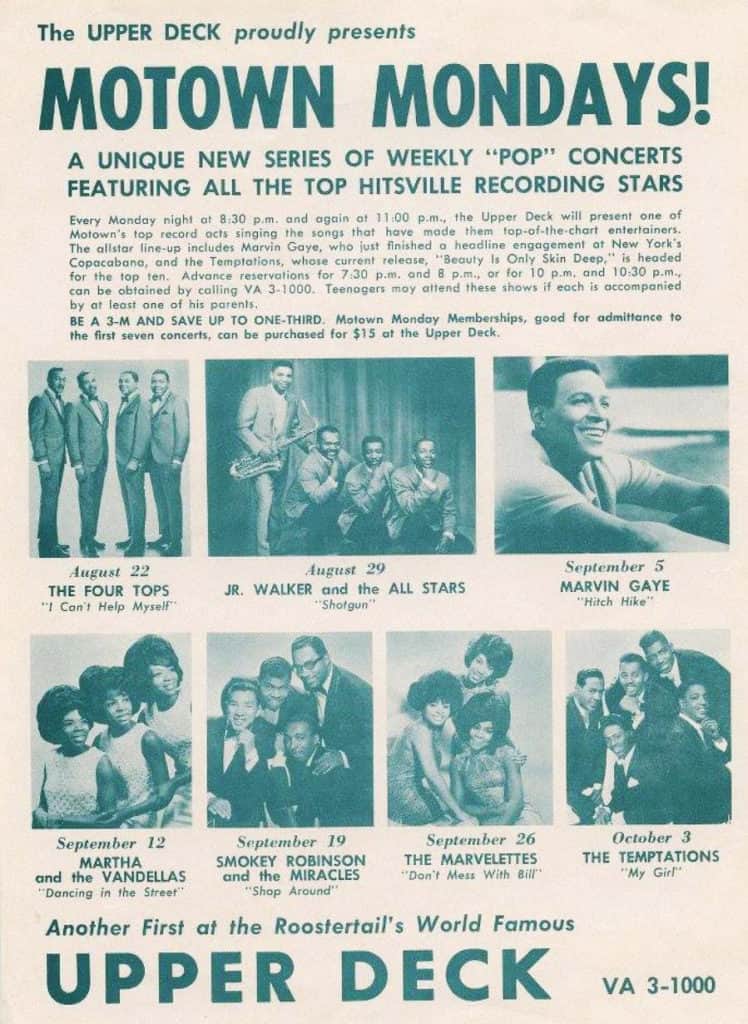 Create mutually beneficial partnerships – Maruca became friends with Berry Gordy while the latter was still working at the local Ford plant. Out of that friendship came creative partnerships that included the “Motown Monday” shows at Detroit’s Roostertail Club and unique access to Motown artists in the crucial 6-10PM time slot when DJ Scott Regen was connecting with the teenage audience. When Stevie Wonder released “Uptight”, it debuted, with the artist in studio singing along, on Keener.
Create mutually beneficial partnerships – Maruca became friends with Berry Gordy while the latter was still working at the local Ford plant. Out of that friendship came creative partnerships that included the “Motown Monday” shows at Detroit’s Roostertail Club and unique access to Motown artists in the crucial 6-10PM time slot when DJ Scott Regen was connecting with the teenage audience. When Stevie Wonder released “Uptight”, it debuted, with the artist in studio singing along, on Keener.
Go where your audience lives and build relationships there – Maruca came up with a creative way to get the word out about Keener’s forthcoming transformation to the indispensible teen audience. “Two weeks before we went on the air with the Keener brand,” he remembers, “We had a press conference and invited all the high school newspapers to attend. So we got written up in just about every high school newspaper in the 3-county area. That’s the trick in all of marketing, not just radio: give the consumers something they want and then find a way to wrap your arms around that so they don’t forget you.”
 Help your advertisers get rich and you’ll get rich, too – Incredibly, no station had effectively tapped the power of the auto industry culture in Detroit. Maruca became friends with John DeLorean, who was developing the GTO for Pontiac. And Keener became the first station to give the new muscle car away as a prize. The contest drove hundreds of listeners to showrooms and supercharged auto sales across the board.
Help your advertisers get rich and you’ll get rich, too – Incredibly, no station had effectively tapped the power of the auto industry culture in Detroit. Maruca became friends with John DeLorean, who was developing the GTO for Pontiac. And Keener became the first station to give the new muscle car away as a prize. The contest drove hundreds of listeners to showrooms and supercharged auto sales across the board.
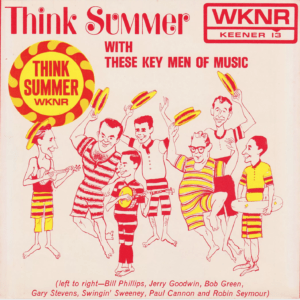 “IBM was using the word think in their advertising in the 60’s,” Maruca said. “I took that and added the word summer to make Think Summer and put up 50 billboards all around the city in February. They said ‘Think Summer: A Community Service of WKNR.’ And we got editorials in the local papers about what a wonderful thing we had done and what a positive feeling the promotion created. The churches were even preaching sermons about Think Summer because it was so positive. Columbia Records heard about it and wrote a song for us called Think Summer, recorded by Susan Wayne. We got all this tremendous feedback from the newspapers, and I took it one step further. I gave every new car dealer in the 3-county area a Think Summer package that included big window banners: ‘Think Summer, Buy Your New Car Now.’ The dealers went crazy! One dealer called me one day and said he had just dumped 2 tons of sand in his showroom and wanted to know where he could get 3 palm trees.”
“IBM was using the word think in their advertising in the 60’s,” Maruca said. “I took that and added the word summer to make Think Summer and put up 50 billboards all around the city in February. They said ‘Think Summer: A Community Service of WKNR.’ And we got editorials in the local papers about what a wonderful thing we had done and what a positive feeling the promotion created. The churches were even preaching sermons about Think Summer because it was so positive. Columbia Records heard about it and wrote a song for us called Think Summer, recorded by Susan Wayne. We got all this tremendous feedback from the newspapers, and I took it one step further. I gave every new car dealer in the 3-county area a Think Summer package that included big window banners: ‘Think Summer, Buy Your New Car Now.’ The dealers went crazy! One dealer called me one day and said he had just dumped 2 tons of sand in his showroom and wanted to know where he could get 3 palm trees.”
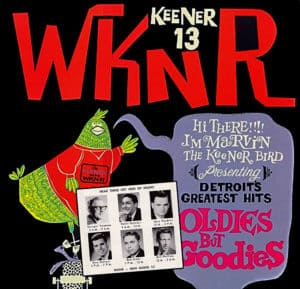 Always give back to the community – Keener’s air staff connected their professional brands with charitable work. Mid-day host, Jerry Goodwin raised over $1 million in 2018 dollars for Danny Thomas’ ALSAC charities.
Always give back to the community – Keener’s air staff connected their professional brands with charitable work. Mid-day host, Jerry Goodwin raised over $1 million in 2018 dollars for Danny Thomas’ ALSAC charities.
Maruca noted that WKNR, “..produced an oldies but goodies album every year and sold it in the record stores and turned all of the proceeds of those albums over to a different charity every year. We would sell 20,000 of those albums in 3 weeks.”
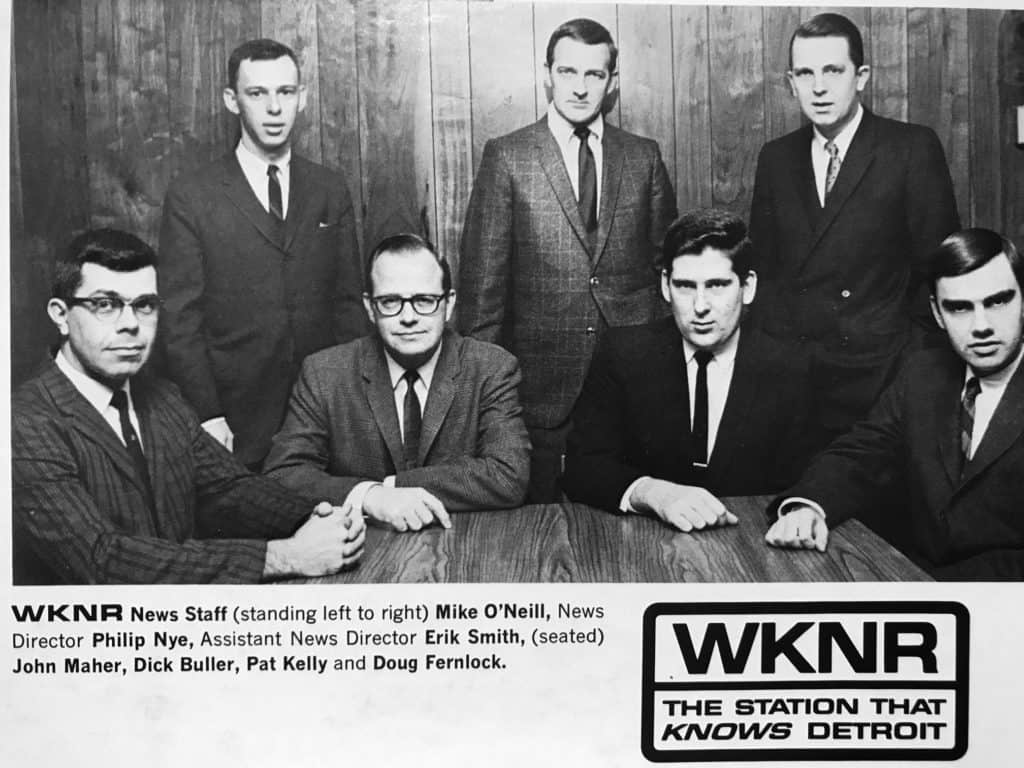 The listener wants more than just music – While the concept of top-40 radio may have been born on top of the radio jukebox idea where music was a centerpiece, Marcua realized that building a strong connection with the community included interpreting the changing cultural landscape in a meaningful way. He hired a seasoned journalist, Philip Nye, as news director and built a full time staff of 8 to cover Detroit. “We won the Associated Press award for best newsroom five years in a row. I had cars equipped with 2-way radios. It sounded like network news. We used a lot of tape. We put good Electro Voice microphones on Sony cassette recorders. And at the end of each year, we would build a news album called ‘Detroit 1965’ or ‘Detroit 1966.’ I had a photographer who took pictures of everything we did and we designed wonderful covers. It was a 60-minute program, 30 minutes on each side, of all the year’s news events in Detroit.” The idea wasn’t to make money, it was to embed the Keener brand into the community. “I sent a box of 25 to every high school in the 3-county area so they could use them in their social studies classes. The schools went crazy over that! We wrapped our arms around the community; that’s how we did it.”
The listener wants more than just music – While the concept of top-40 radio may have been born on top of the radio jukebox idea where music was a centerpiece, Marcua realized that building a strong connection with the community included interpreting the changing cultural landscape in a meaningful way. He hired a seasoned journalist, Philip Nye, as news director and built a full time staff of 8 to cover Detroit. “We won the Associated Press award for best newsroom five years in a row. I had cars equipped with 2-way radios. It sounded like network news. We used a lot of tape. We put good Electro Voice microphones on Sony cassette recorders. And at the end of each year, we would build a news album called ‘Detroit 1965’ or ‘Detroit 1966.’ I had a photographer who took pictures of everything we did and we designed wonderful covers. It was a 60-minute program, 30 minutes on each side, of all the year’s news events in Detroit.” The idea wasn’t to make money, it was to embed the Keener brand into the community. “I sent a box of 25 to every high school in the 3-county area so they could use them in their social studies classes. The schools went crazy over that! We wrapped our arms around the community; that’s how we did it.”
Associate advertisers with every dimension of your brand in a creative way – Keener’s music guides were a huge hit and became a popular advertising vehicle, too.
“We surveyed record sales in 75 record stores every week. The reason we surveyed so many is that Detroit was known to have 5 percent of the nation’s record sales in those days, and I had to watch out for payola. I needed to be sure record companies weren’t paying off the record stores. That’s why I did 75, to protect us. Then we would print 75,000 copies of the music guide and distribute them every Friday morning to the record stores. I gave the back of it to big advertisers. Nobody had ever thought about that.”
Many of the things that Frank Maruca pioneered became common practice at the more successful hit music stations that emerged in the 1960s. And if you look deeply into some of today’s most successful brands, like Apple, Amazon and Google, you’ll find a bit of Frank Maruca’s magic dust in the mix.
When Keener Was Young
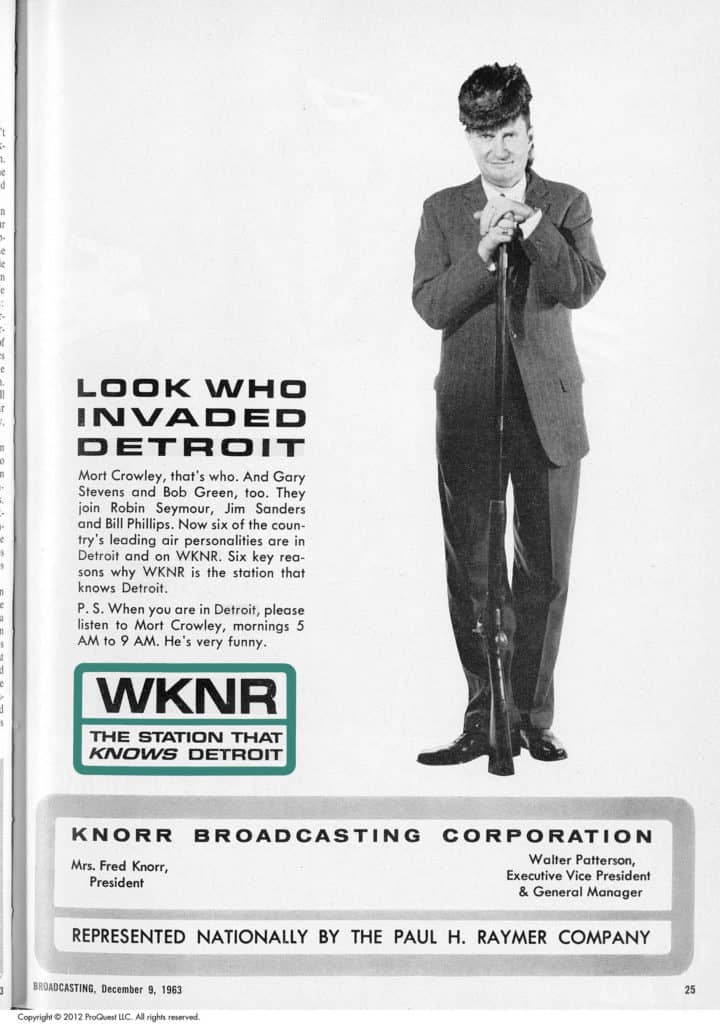 By December of 1963, the Keener phoenominon had captivated the Motor City. The station was rocketing to the top of the Detroit radio ratings with the winning combination of entertaining announcers, a tight playlist of proven hits and an “intelligent flexibility” given to the jocks to experiment.
By December of 1963, the Keener phoenominon had captivated the Motor City. The station was rocketing to the top of the Detroit radio ratings with the winning combination of entertaining announcers, a tight playlist of proven hits and an “intelligent flexibility” given to the jocks to experiment.
Keener burst onto the scene in the midst of a changing American scene. We were still processing the assassination of John F. Kennedy. The Warren Commission was convened on December 3rd to investigate. Malcolm X gave his famous “Message to the Grass Roots” speech in Detroit. The first video tape instant replay was demonstrated by CBS TV Director, Tony Verna during a telecast of the Army/Navy football game. When Mort Crowley appeared in a full page ad for WKNR in the December 9th edition of Broadcasting Magazine, The Beatles had yet to explode on the American scene. I Saw Her Standing There & I Want to Hold Your Hand would be released on December 26th.
The December 19th edition of the WKNR Music Guide featured for acts from Berry Gordy’s labels. The Marvelettes, the Supremes, Martha and the Vandellas and the Miracles were all getting airplay. Rock and Roll was still intermingled with what would, in a year, be considered “middle of the road”. Bobby Vinton’s There I’ve Said It Again was at Number 1, juxtaposed with the garage grunge Surfin Bird from the Trashmen at number 4. Keener’s very first number one song, The Kingsmen’s Louie Louie was still in the top 10 and Chuck Berry’s The Twist was the top rated LP.
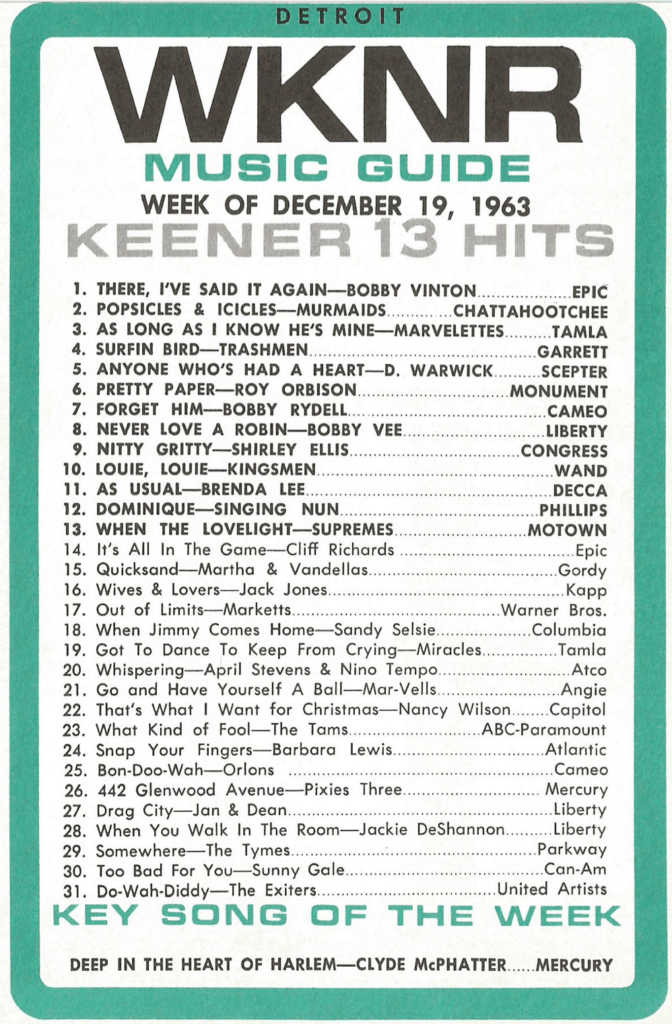 On television, The Fugitive, The Patty Duke Show and Burke’s Law premiered on ABC. Petticoat Junction began its 7 year run on CBS. And Mutual of Omaha’s Wild Kingdom was finishing the first of 25 seasons on NBC. The Jetsons, Hawaiian Eye and Leave It To Beaver ended their prime time runs. Being close to the border, many of us were fans of the CBC’s Hockey Night in Canada. Gordie Howe and the Detroit Red Wings remained our favorite NHL team.
On television, The Fugitive, The Patty Duke Show and Burke’s Law premiered on ABC. Petticoat Junction began its 7 year run on CBS. And Mutual of Omaha’s Wild Kingdom was finishing the first of 25 seasons on NBC. The Jetsons, Hawaiian Eye and Leave It To Beaver ended their prime time runs. Being close to the border, many of us were fans of the CBC’s Hockey Night in Canada. Gordie Howe and the Detroit Red Wings remained our favorite NHL team.
It was a year of big screen blockbusters. Cleopatra, Alfred Hitchcock’s The Birds, It’s a Mad, Mad, Mad, Mad World and the Cinerama masterpiece, How The West Was Won were all doing boffo box office. A journeyman actor from England named Sean Connery appeared in the first installment of the James Bond series, Dr. No. Walt Disney had two entries in the top 10 grossing films of 1963, The Sword in the Stone and Son of Flubber.
Trolls, the Vac-u-Form and Kenner’s Easy Bake Oven were the most requested items on kids’ Christmas lists.
The Keener Key Men of Music in December of 1963 featured Mort Crowley in the morning, Gary Stevens, Bob Green, Robin Seymour, Jim Sanders and Bill Phillips, essentially the starting line-up the station had debuted when it flipped formats on Halloween night.
For those who grew up in Detroit in the 1960s, these memories are likely still fresh, from a time before our phones were in our pockets and radio was a secondary source for news and entertainment. We still mourned Kennedy, had yet to process the impact of the Vietnam war and believed that championship seasons were still ahead for the Wings, the Tigers and the Lions.
Radio was at the center of our collective consciousness, at home and in the car. And our relationships with the entertainers behind the mic that was just as important as the tunes we were humming.
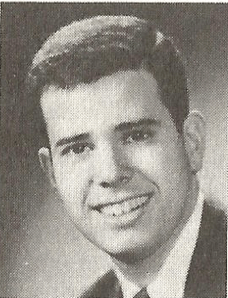
Our aircheck of the week features Keener’s afternoon drive ace, Gary Stevens, recorded 7 months later, in July of 1964. Here he is at his zany best, featuring the Wollyburger, Keener Baseball, the British Invasion and more. Gary would graduate to the Big Apple, become a pirate radio legend in England and then move behind a desk as one of the most successful broadcast executives of the era.
WKNR – December 8, 1965
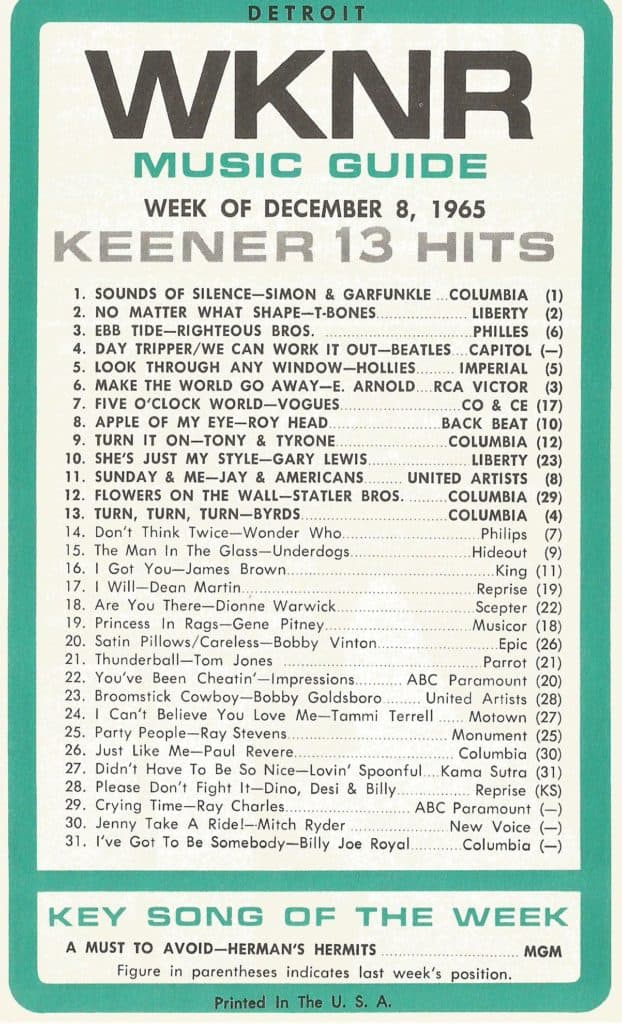 In December of 1965, the Vietnam war was raging in Southeast Asia. St. Louis residents were still marveling at the recently completed Gateway Arch. Pillsbury introduced a new spokesman, someone they called the doughboy. We were still humming Beatle tunes from their film, Help!, in the wake of their 4th and final appearance on the Ed Sullivan Show. The Detroit Red Wings were just under 500 on the season, hoping to extend a 4 game winning streak as they prepared to host the New York Rangers at Olympia Stadium. We were driving cars with maize and blue Michigan license plates, watching Divorce Italian Style on the Channel 7 late movie, and on CBS, promos were running for the Saturday night debut of “A Charlie Brown Christmas”.
In December of 1965, the Vietnam war was raging in Southeast Asia. St. Louis residents were still marveling at the recently completed Gateway Arch. Pillsbury introduced a new spokesman, someone they called the doughboy. We were still humming Beatle tunes from their film, Help!, in the wake of their 4th and final appearance on the Ed Sullivan Show. The Detroit Red Wings were just under 500 on the season, hoping to extend a 4 game winning streak as they prepared to host the New York Rangers at Olympia Stadium. We were driving cars with maize and blue Michigan license plates, watching Divorce Italian Style on the Channel 7 late movie, and on CBS, promos were running for the Saturday night debut of “A Charlie Brown Christmas”.
Keener’s playlist reflected the eclectic tastes of a public that was still processing the evolution of rock and roll. Eddie Arnold and the Statler Brothers shared the field with Simon and Garfunkle, The Hollies and the Byrds. The British Invasion was in full swing with 4 acts in competition for ear time. The Underdogs were one of the Michigan garage bands who were seeking a second chart hit, while playing with the likes of Suzy Quatro and a Doug Brown and The Omens at Punch Andrews’s Hideout Night Clubs, the latter featuring a keyboard player from Ann Arbor by the name of Bob Seger. Toys like the Easy Bake Oven, GI Joe and Whamo’s Superball were among the most requested Christmas gifts. Advertisements for David Lean’s Dr. Zhivago were appearing in Detroit area newspapers. The film would open on December 22, joining The Greatest Story Ever Told and The Sound of Music as the year’s biggest blockbusters.
On the WKNR Music Guide, the number 1 song was Columbia Records’ reinvention from Simon and Garfunkle’s Wednesday Morning, 3AM LP. The Sounds of Silence had flopped a year earlier, inspiring producer Tom Wilson to bring bassist Joe Mack, drummer Buddy Salzman and guitarists Vinnie Bell and Al Gorgoni into the studio to overdub an electrified backing track. Done without the duo’s knowledge, this gave the record a competitive edge in a field filled with electric competition.
The Beatles’ Day Tripper & We Can Work It Out, became one of the station’s highest debuting double sides, opening at number 4. Power rotation also included iconic hits like the Hollies’ Look Through Any Window, James Brown’s signature I Got You and the Vogues ode to the working man, 5 O’clock World. The James Bond film Thunderball was still in circulation at neighborhood theiaters, along with Tom Jones’ theme song. And The Lovin Spoonful’s follow up to Do You Believe in Magic, You Didn’t Have to Be So Nice, was in it’s second week on the charts.

Keener was in it’s prime as a Detroit radio brand, as is showcased in this classic Bob Green aircheck. The Letter from Santa contest distributed Kodak’s Instamatic cameras across the Motor City. Lucky license numbers and The Keener Word of the day were perennial promotions. Bob’s conversational energy is both engaging and infectious, reflecting the Intelligent Flexibility maxim that was at the key ingredient Keener’s secret sauce. You can hear other familiar voices, including Paul Cannon and Ted Clark and classic Detroit advertisers are in evidence, including Gene Merollis Chevrolet. Behind it all is the classic WKNR reverb, crafted from a Hammond Organ spring by chief engineer, Jerry Martin.
Listening again to the Keener sound reminds us that, then as now, communications is about building relationships. We are engaged to the extent that we feel part of the magic. And in the mid 1960s few things were more engaging than WKNR.
How Keener Covered the Summer of ’67
It began with a raid on an unlicensed after hours bar, “a blind pig” in the parlance of that time. 5 days later 43 had died, nearly 1,200 were injured, over 2,000 buildings had burned and more than 7,000 were arrested. It became known as the 1967 12th Street Riot (#Rebellion67 is the hash tag being used on Twitter), at the time the largest riot since the Civil War. It would not be surpassed until 1992 when Los Angeles erupted in the wake of the Rodney King beating.
Units of the Michigan Army National Guard and ultimately the 82nd and 101st Airborne Divisions were deployed to quell the unrest and the reverberations of the event still echo to the present day.
 WKNR Contact News provided extensive coverage of the story, which featured prominently in Keener’s annual documentary production, “Detroit 1967“.
WKNR Contact News provided extensive coverage of the story, which featured prominently in Keener’s annual documentary production, “Detroit 1967“.
News Director Philip Nye deployed WKNR’s 8 man staff throughout the impacted area. “At it’s peak,” he remembered, “the riots spread over fourteen-square miles of the city. A curfew was in effect, a complete ban placed on liquor sales, gasoline can be purchased only during certain hours and never in a container, offices, banks, schools, businesses, industries were closed down; the heart of Detroit was deserted. Deliveries were curtailed. Food ran short. All normal activities in the nation’s fifth-largest city was at a standstill.”
“Police sealed off 12 street hoping to contain the riot. It didn’t work. All available firemen were called to duty, trying to battle the burgeoning number of blazes. It became nearly an impossible task. Time after time they were the targets of bricks and bottles at a fire scene. Later those bricks and bottles became bullets. Like a plague it spread, moving west and northwest across Woodward. It was out of control. At a command post downtown, city officials were joined by Michigan Gov. Romney. State police were called in, the National Guard mobilized and finally federal troops requested… By Thursday, it had run its course. Troops were told that sheathe their bayonets. On Friday the last major fire was reported.”
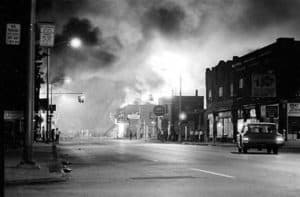
The Detroit Free Press won a 1968 Pulitzer Prize for it’s coverage and many of us who listened to WKNR back in the day remember visceral television images of black smoke curling into the summer sky.
Much was done in the wake of the riot to try and change the environment of anger and distrust. The success of initiatives like “New Detroit” and “Detroit Renaissance” are debated to this day.
In 1994, Detroit’s first African American mayor, Coleman Young, would write, “The heaviest casualty, however, was the city. Detroit’s losses went a hell of a lot deeper than the immediate toll of lives and buildings. The riot put Detroit on the fast track to economic desolation, mugging the city and making off with incalculable value in jobs, earnings taxes, corporate taxes, retail dollars, sales taxes, mortgages, interest, property taxes, development dollars, investment dollars, tourism dollars, and plain damn money. The money was carried out in the pockets of the businesses and the white people who fled as fast as they could. The white exodus from Detroit had been prodigiously steady prior to the riot, totaling twenty-two thousand in 1966, but afterwards it was frantic. In 1967, with less than half the year remaining after the summer explosion—the outward population migration reached sixty-seven thousand. In 1968 the figure hit eighty-thousand, followed by forty-six thousand in 1969.”
The summer of ’67 changed the nation, bringing uncomfortable realities to the forefront of our consciousness and changing the course of our dialogue about race, poverty and the American Dream forever.
Link – Listen to Detroit ‘ 67, the WKNR Contact News documentary about the year.
Link – Read Jim Feliciano’s excellent essay about the 12th Street Riot and WKNR’s coverage at the Motor City Radio Flashbacks website.
 Michigan Radio’s Stateside program is tweeting the events of #Rebellion67 in real time on twitter. Follow @StatesideRadio for the stream.
Michigan Radio’s Stateside program is tweeting the events of #Rebellion67 in real time on twitter. Follow @StatesideRadio for the stream.
Keener13.com Turns 15!
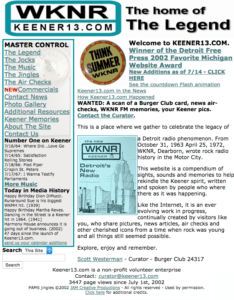 In June of 2002, Steve Schram and Scott Westerman were doing what they loved best: Staying up late and listening to WKNR airchecks. It was a habit that began when they first met at Michigan State University in the ’70s, but, as individuals their love for Keener had taken root a decade earlier, on that October evening in 1963 when WKMH took on new call letters and a new format.
In June of 2002, Steve Schram and Scott Westerman were doing what they loved best: Staying up late and listening to WKNR airchecks. It was a habit that began when they first met at Michigan State University in the ’70s, but, as individuals their love for Keener had taken root a decade earlier, on that October evening in 1963 when WKMH took on new call letters and a new format.
They didn’t know it then, but WKNR and the people who worked there, would set the standard for every future step in their professional careers. “How would Keener have done it,” became the question they would ask themselves as their own broadcasting adventures took shape. And now, as the clock passed 2AM, one of them, neither can remember which, came up with the idea of a creating website celebrating their favorite Detroit radio station.
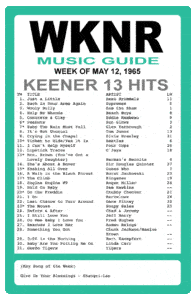 It didn’t take long to pull together the beginnings of what would become the largest collection of Keener memorabilia in existence. And on July 1, Keener13.com launched.
It didn’t take long to pull together the beginnings of what would become the largest collection of Keener memorabilia in existence. And on July 1, Keener13.com launched.
Since then, virtually every significant personality heard on WKNR has contributed something to the collection. The aircheck archive has been a source for researchers studying Detroit’s 60s history as Keener reflected it. Keener13.com has been referenced in television documentaries and in Andru Reeve’s famous, Turn Me On Dead Man – The Beatles and Paul McCartney Death Hoax. We’ve amassed a nearly complete collection of every WKNR Music Guide. There’s the “Inside Keener” library of weekly staff memos that chronicled the comings and goings. And the Keener photo gallery is filled with the famous faces we associated with the voices we knew so well.
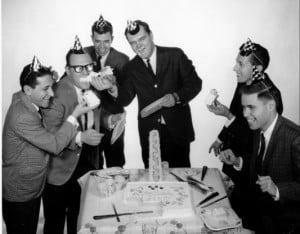 This website has spawned a number of celebratory events. For two summers, we were honored to produce special broadcasts on Keeners 1310 Khz frequency during the Woodward Dream Cruise. A collectable series of Keener Podcasts were created. Keener personalities were honored celebrities in a series of Detroit Radio Reunions over the years. And in the summer of 2014, we were proud to participate in a reunion of many of the original Keener Keymen in New York City.
This website has spawned a number of celebratory events. For two summers, we were honored to produce special broadcasts on Keeners 1310 Khz frequency during the Woodward Dream Cruise. A collectable series of Keener Podcasts were created. Keener personalities were honored celebrities in a series of Detroit Radio Reunions over the years. And in the summer of 2014, we were proud to participate in a reunion of many of the original Keener Keymen in New York City.
Along the way, Steve and Scott have occasionally taken to this space to mark key events in the lives of the Keener generation. We’ve said goodbye to some who have left us too soon, remembered moments in popular culture that shaped our attitudes about the world around us and shared the backstory on some of the personalities that are indelibly connected to the soundtrack of our lives.
 6 years ago, Keener13.com surpassed the lifetime of WKNR itself. We marked that event by launching the Keener Facebook Group and entering into the world of social media that would have been a significant, audience participation dimension of the station’s personality, had it existed back in the day.
6 years ago, Keener13.com surpassed the lifetime of WKNR itself. We marked that event by launching the Keener Facebook Group and entering into the world of social media that would have been a significant, audience participation dimension of the station’s personality, had it existed back in the day.
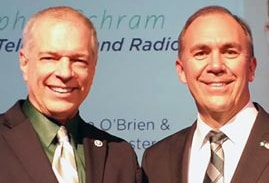
The Keener13.com project has been a labor of love, a reminder of how radio, at it’s best, could connect with an audience in an affirming, life changing way. A common statement made by everyone we’ve talked to who was connected with WKNR was that it was a defining moment in their lives. We share that sentiment.
And at every turn, we have been grateful for the essential contributions of people like you, folks who were touched by the Keener Magic and were willing to share your stories with us.
Thank you, for a decade and a half of great memories, and for making every season, Keener season!
Remebering Swingin Sweeney
By Scott Westerman curator@keener13.org
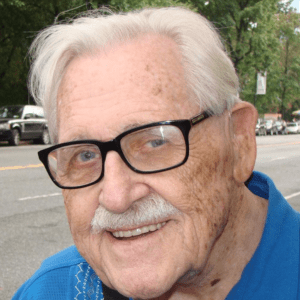 The Red Eye Grille straddles the northwest corner of 7th avenue and 59th street in New York City. It’s just blocks from the Ed Sullivan Theater where Letterman and Colbert performed and a short walk to the heart of Broadway. In the summer of 2014 it was the home for a reunion of many of the original Keener Keymen. In attendance were Bob Green, Jerry Goodwin, Gary Stevens and Robin Seymour, personalities from the dawn of WKNR’s notoriety. Scott Regen came soon after. John Meagher and Jim Brooker represented Contact News with Pat St. John and Jim Kerr representing the long tail of the Keener legend. Frank Maruca joined via Skype. At the center of the action was the man who found the venue, the host and sometime master of ceremonies, Frank “Swingin” Sweeney.
The Red Eye Grille straddles the northwest corner of 7th avenue and 59th street in New York City. It’s just blocks from the Ed Sullivan Theater where Letterman and Colbert performed and a short walk to the heart of Broadway. In the summer of 2014 it was the home for a reunion of many of the original Keener Keymen. In attendance were Bob Green, Jerry Goodwin, Gary Stevens and Robin Seymour, personalities from the dawn of WKNR’s notoriety. Scott Regen came soon after. John Meagher and Jim Brooker represented Contact News with Pat St. John and Jim Kerr representing the long tail of the Keener legend. Frank Maruca joined via Skype. At the center of the action was the man who found the venue, the host and sometime master of ceremonies, Frank “Swingin” Sweeney.
It’s now almost two years later as I meet Frank and his long time companion, Stephanie for lunch at that same hallowed location. It’s clear that he’s royalty here, warmly welcomed by the staff, who exude genuine love for an amazing spirit who became Keener’s second morning man in the wake of Mort Crowley’s dramatic departure. Continue reading “Remebering Swingin Sweeney” →
The Keener Top 113 All Time Leading Hits 1956-1968
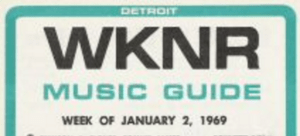 Remember how Keener used to play special programming on holiday weekends? Rock-u-mentaries were common on Top 40 stations back in the day. The History of Rock and Roll, Aural histories of the Beatles, the Stones, Elvis, and Motown, each of these topics were fodder for extended attention, especially over those long weekends when the DJs took time off to be with their families.
Remember how Keener used to play special programming on holiday weekends? Rock-u-mentaries were common on Top 40 stations back in the day. The History of Rock and Roll, Aural histories of the Beatles, the Stones, Elvis, and Motown, each of these topics were fodder for extended attention, especially over those long weekends when the DJs took time off to be with their families.
There were also periodic surveys of “The Greatest Hits of All Time”. On January 1st 1969, WKNR released their list of the “Leading 113 All Time Hits – 1956-1968″. Time and the fading of memory has dimmed the process by which the station came up with the list, but it includes some of the most memorable music of the rock era up to that time. A special, elongated WKNR Music Guide was created to mark the event. It’s become a collector’s item among avid Keenerfans. Here’s the list as it was first heard on New Year’s Day, 1969. Continue reading “The Keener Top 113 All Time Leading Hits 1956-1968” →
Yes, we really did listen to music that way..
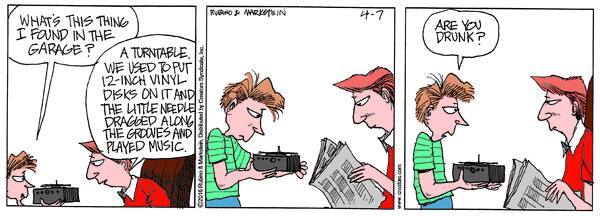 Some of us may have actually had an encounter like this. In an age where music magically appears on a smart device, it’s hard for some youngsters to believe that, once upon a time, we spent our money on expensive electronics that used a revolving flat plastic disc to render our favorite songs.
Some of us may have actually had an encounter like this. In an age where music magically appears on a smart device, it’s hard for some youngsters to believe that, once upon a time, we spent our money on expensive electronics that used a revolving flat plastic disc to render our favorite songs.
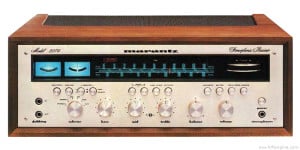
If your experience was like many in the Keener generation, you probably started out with a portable record player, perhaps graduated to an integrated stereo system where all the components were in one box and then moved up to a component arrangement that was worth more than the car you drove. Names like Marantz, The Fisher, Sansui & McIntosh (not the computer) were coveted brands. Often times, we’d put together a receiver, tape deck, turntable and speakers that were each made by different companies. And the bigger the better! How cool you were sometimes paralleled the size of your speaker cabinets and whether or not you had one of those way cool reel to reel tape decks.
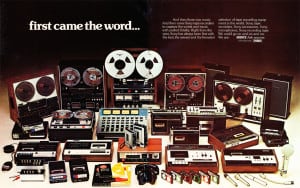
Mix tapes were carefully crafted back then, created from a thoughtful review of our collection of 33 1/3 albums and the 45 rpm singles we bought at Harmony House after consulting the latest WKNR Music Guide. In the car, we might have sprung for electronics from Micky Shorr’s or Michigan Mobile Radio to replace the AM-only receivers with the pristine sounds of FM. Some of the more adventurous among us might even have added reverb units to simulate stereo sound with the often static prone AM signals that were the mainstay of our youth. Along the evolutionary way, 8 track tapes had a brief vogue. Even though they played at only 1 7/8 inches per second, versus the 7 1/2 ips format that was the broadcast standard, we put up with the artifacts, just to be able to listen to our favorite albums on the road.

As the Keener era came to a close, cassettes had come to the fore and it was only a matter of time until the machines that played them became convenient handheld devices, a precursor to today’s iPods and smart phones. Most of us also owned one cassette recorder that was attached to our stereo stack. Mix tapes became more than just a way to listen to our favorite tunes. They could also be love letters. How many of us created mix tapes for our significant others in the hope of deepening the relationship? As John Cusack’s character in the film High Fidelity put it, “The making of a good compilation tape is a very subtle art. Many do’s and don’ts. First of all you’re using someone else’s poetry to express how you feel. This is a delicate thing.”
Perhaps Rob Sheffield, writing in Love Is a Mix Tape said it best. “The times you lived through, the people you shared those times with — nothing brings it all to life like an old mix tape. It does a better job of storing up memories than actual brain tissue can do. Every mix tape tells a story. Put them together, and they can add up to the story of a life.”
Beatles on a Train
On March 11, 1964 The Beatles film the “I Should Have Known Better” segment of the film, A Hard Day’s Night, on a London soundstage configured to look like the inside of a railroad train. Here’s the segment (subtitled en Espanol).
Sunday Brunch with Sonny and Cher
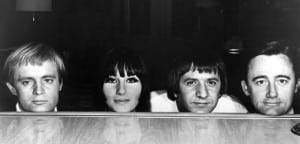 On March 10, 1967 James Bond and the secret agent craze are at their peak. Sonny and Cher guest star as “Jerry and Ramona” on the “The Hot Number Affair” episode of NBC-TV’s The Man From U.N.C.L.E. The pop duo play garment-center employees who are swept up in a frantic quest for a THRUSH world-conquest report, hidden in the pattern of a dress. George Tobias, Ned Glass and Kelton Garwood co-star.
On March 10, 1967 James Bond and the secret agent craze are at their peak. Sonny and Cher guest star as “Jerry and Ramona” on the “The Hot Number Affair” episode of NBC-TV’s The Man From U.N.C.L.E. The pop duo play garment-center employees who are swept up in a frantic quest for a THRUSH world-conquest report, hidden in the pattern of a dress. George Tobias, Ned Glass and Kelton Garwood co-star.
Sonny and Cher’s “The Beat Goes On” had just finished a WKNR Music Guide chart run the previous month, peaking at number 5. What’s not generally known is that the iconic bass line that gave the song it’s power was an idea contributed on the fly by Wrecking Crew legend Carol Kaye. Here’s the story as told by Carol, herself.
Happy Birthday, Tom Lehrer
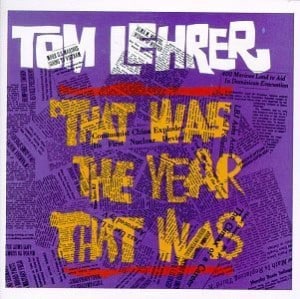 Dr. Demento called him, “the best musical satirist of the twentieth century. Randy Newman and “Weird Al” Yankovic are huge fans. His 1965 LP with music from the NBC TV series “That Was the Week That Was” is a prized possession for many Keener fans who were discovering their social consciousness.
Dr. Demento called him, “the best musical satirist of the twentieth century. Randy Newman and “Weird Al” Yankovic are huge fans. His 1965 LP with music from the NBC TV series “That Was the Week That Was” is a prized possession for many Keener fans who were discovering their social consciousness.
Tom Lehrer was born on March 10, 1928. He was a mathematician and political scientist, teaching during his long career at MIT and UC Santa Clara. But he could also play the piano, had a love for show tunes and a razor sharp wit.
During his brief musical career, he was one of the foremost satirists of the time, writing sharp, topical tunes about everything from racism and the atomic bomb to religion and pornography. He wrote for the American version of the BBC series, “That Was the Week That Was” during it’s brief prime, from January of 1964 through May of 1965.
It’s unclear if any of his stuff ever made it to the WKNR airwaves, but if you came of age in the mid-60s, it’s likely you not only heard Tom Lehrer’s stuff, but you might also still have at least one of his albums among your LP collection.
Here’s Tom’s take on “The New Math”.
Opening Day!

Did you know: That the Detroit Tigers flagship station was once WKNR’s predecessor, WKMH? Station owner, Fred Knorr was also part owner of the Tigers and during the last years of his life Keener was the Motor City home for Tiger Baseball.
Who among us who grew up in Detroit in the Keener era can forget Tiger Stadium? For many, it’s etched into the screenplay of our youth, the sun beating down on our bleacher seats, the smell of Hygrade Ballpark Franks and Stroh’s Beer, the green grass mixed with the rich brown infield earth, and the pitcher’s mound, only 10 inches above grade but seeming to tower over the proceedings as the batter at home plate stared down the men whose rocket arms and ice water nerves could mean the difference between victory and defeat.
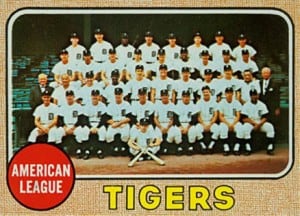
That Hemingway sentence only scratches the surface of what comes to mind when we think about baseball in The Motor City. Depending on the decade, our heroes had names like Kaline, Cash, Freehan, Lolich, Horton, Brown, McLain, Trammel, Gibson, Morris, Fidrych, Smith and Anderson. And of course, there was always Ernie. He was the voice of Spring, a unique, comforting presence that could be heard in the air on warm summer evenings, painting word pictures that flowed out of transistor radios on pontoon boats coursing across Houghton Lake, describing the highs and lows as we watched the ebb and flow of a baseball team that was as much a part of who we were then as was the radio stations that provided the soundtrack of our lives.
The Tiger’s hall of fame play-by-play announcer may have cut his teeth in Atlanta and New York, but Ernie Harwell will forever be remembered as the voice of Detroit. In fact, it wouldn’t be opening day without a recitation of the poem Ernie intoned at the start of every season. Our Tigers play, today in the friendly confines of the beautiful Comerica Park. Tiger Stadium was razed nearly ten years to the day after the last out was called in September of 1999. But for the Keener generation, the edifice at the corner of Michigan and Trumbull lives on in our memories. And wherever you may be on opening day, you can be certain that “the voice of the turtle” will be heard again, wherever the Tigers call home.
And here’s an additional treat, the final inning of Game 7 of the 1968 World Series, followed by Ernie’s post game locker room interviews. Where were you when the Tigers earned the World Championship?


